-
All tips on how to care for your indoor strelitzia to keep it growing happily

As a plant enthusiast, We're thrilled to share our passion for the stunning Strelitzia, also known as the Bird of Paradise plant. Its unique beauty is undeniable, with its striking resemblance to the banana plant. Native to southern Africa, this exotic gem has gained popularity worldwide, and you can now find it thriving in the Mediterranean and Canary Islands. But what really sets it apart is its adaptability - you can bring one home from a nursery and enjoy its beauty in your own space.
Perhaps you're a fellow fan of the Bird of Paradise plant, but struggle to provide the optimal care it needs. Or maybe you're considering adding one to your plant family, but want to know more before making a purchase. Either way, you've come to the right place! In this blog, we'll delve into the ins and outs of caring for this regal houseplant, providing expert tips and guidance on how to keep it thriving and happy in your home.
information about the strelitzia
The Strelitzia, affectionately known as the Bird of Paradise plant, is one of the most sought-after plants at the moment. Caring for your Strelitzia is a doddle, really - simply place it in a bright spot, ensure it receives ample watering, and this South African gem will thrive for years to come.
If you're keen to create your own urban oasis at home, a Strelitzia is an absolute must-have on your balcony or in your garden. Yes, it's a versatile plant that can be kept indoors as well as outdoors, making it perfect for any space.
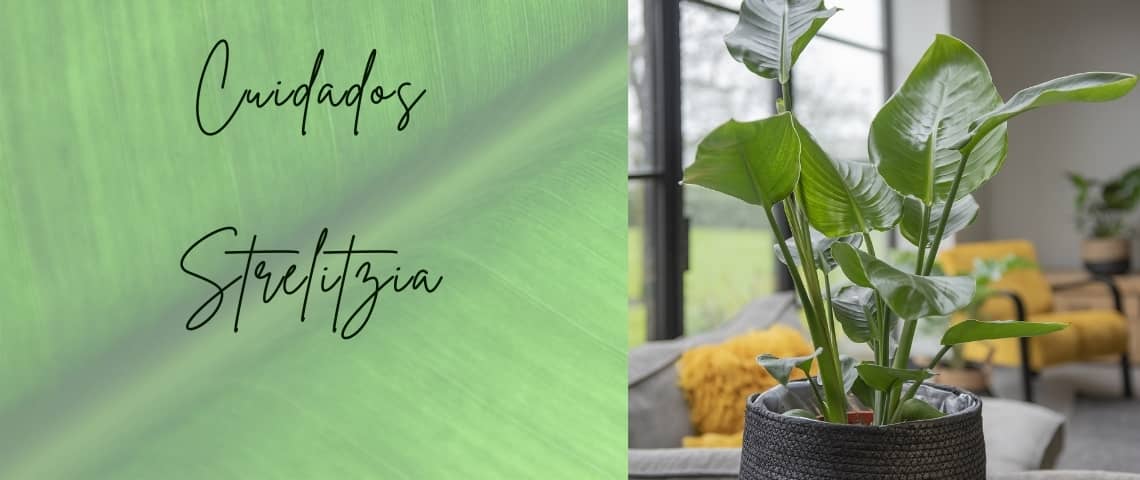
its characteristics
We know several known species of strelitzia, we distinguish 3 different types:
- The Strelitzia Nicolai
- The Strelitzia Augusta
- The Strelitzia Reginae
The Bird of Paradise plant shares a familial connection with the banana plant, a trait that is evident in its striking leaf structure. The Strelitzia nicolai and Strelitzia augusta varieties boast beautiful, dark green leaves that gradually increase in size as the plant matures. Notably, these leaves may also develop characteristic cracks, adding to their dramatic appearance. This natural phenomenon occurs due to wind exposure, allowing for improved air circulation between the leaves. As an added benefit, the plant's robust nature ensures that even strong gusts will not cause the entire plant to break or topple.
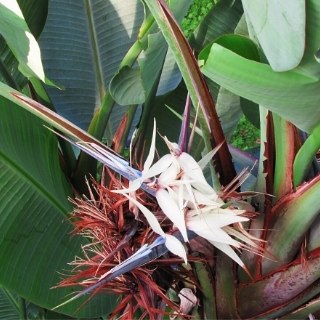
strelitzia nicolai
The Strelitzia Nicolai is the best known of this type. This plant has beautiful long, evergreen leaves and multiple stems. Strelitzia Nicolai is often confused with the banana tree because of the similarity in colour and shape of the leaves. Unlike reginae, Strelitzia Nicolai will not flower when kept indoors. Outdoors, the plant produces very characteristic flowers, the colours of which for nicolai are black and white.
strelitzia augusta
Strelitzia Augusta (also Strelitzia Alba or white bird of paradise) has many similarities with strelitzia nicolai. From the centre of the pot, the stems stand upright side by side, giving the plant a fan-like appearance. The Augusta is the species that can reach 10 metres in height in the wild.
This version has robust leaves that are less flexible than those of other species, so they tend to stand upright. Its flowers are white.
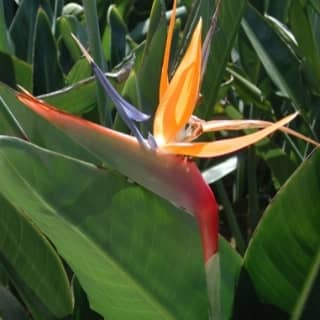
strelitzia reginae
This Strelitzia plant grows to a maximum height of about 1.8 metres and 1 metre wide. The bird of paradise flower requires the same care as other strelitzias and is just as easy to maintain. The flowers usually appear in early spring, are bright orange/blue and reach about 20cm.
tips for caring for your strelitzia
Before buying a strelitzia, you should consider the following ideal growing conditions. It can be kept outdoors and indoors. We will give you from the basic care to all the necessary tips for keeping strelitzias indoors. Here we go!
the location
The best position for your srelitzia is in a bright place, but not in direct sunlight. A place two metres from the window is perfect. You can place it in front of a south-facing window, as long as you hang a (slightly) transparent curtain in front of it when the sun is shining. Never place a strelitzia in the shade or in a place where natural light cannot reach it.
In summer, the sun can shine so brightly that the leaves of the strelitzia will burn. Especially when the plant has just come from the nursery, where it has been grown under filtered light. In this case, let your banana plant get used to direct sunlight gradually, i.e. introduce it little by little to the bright Spanish sun.
the soil or substrate
Strelitzias like well-drained loamy soil, which is a mixture of sand, silt and a little clay. They prefer a pH between 5.5 and 6.5, which means that they love an acid substrate.
the temperature
The perfect temperature for the bird of paradise plant is 20 °C. Temperatures below 10 °C should be avoided. Because of these requirements, strelitzia is popular as a living room plant and as a plant for offices, hotels and restaurants.
the room humidity
Since you want to have your bird of paradise as a houseplant, it is good to know that it originates from South Africa, so it is used to a warm climate and relatively high humidity. So our advice is that you can always wet (spray) the leaves of your Strelitzia with water. Especially in the winter months, when the heating at home is on and the air is super dry, it is advisable to spray the plant with a plant sprayer.
watering
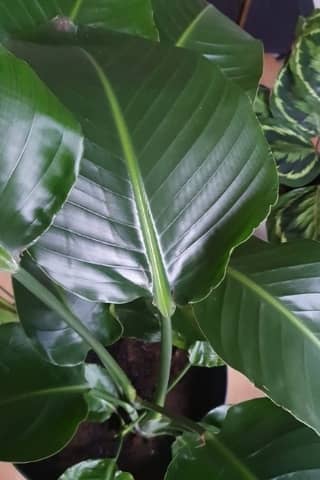
Strelitzia is a relatively fast growing plant and therefore needs a lot of water during the spring and summer months. Make sure the soil is kept somewhat moist, but avoid leaving the roots permanently in water. In winter, the bird of paradise is dormant. Watering should be adjusted accordingly. Let the substrate dry out between waterings so that there is no opportunity for fungus to develop.
spraying its leaves
Given its (sub)tropical origin, the banana plant needs relatively high humidity. You can spray its leaves regularly with water. For this, it is best to use lime-free water or rainwater. Another thing the plant will thank you for is to put it outside during a hot summer shower. Rainwater contains a lot of nutrients.
water shortage
If you water your strelitzia too little, the leaves will start to droop and if this continues, they will dry out quickly. Always anticipate this by making sure that the substrate dries out a little. Check twice or three times a week in spring and summer. This way you can see if the plant is craving another splash of water. Stick your finger a centimetre into the soil to check the soil moisture; if it is dry, water it. Never let the soil dry out completely between waterings.
over-watering
Too much water on the other hand can cause yellow spots on the leaves and leaf drop. If you have a saucer under the pot, check if the plant is not in a puddle of water and remove the excess water directly. If the soil is really too wet, it is important to replace the substrate so that the roots do not remain in this condition for too long.
fertilising
Your strelitzia likes to receive some nutrients from time to time. The best time to fertilise is from May to September. It is best to give it a liquid fertiliser every three to four weeks to stimulate growth. This will stimulate the growth of the stalks and leaves, making your plant even more beautiful. For this, use a universal fertiliser for green plants for example. Always check the correct dosage on the product packaging. Strelitzias hardly grow at all during the winter and therefore do not need fertiliser.
transplanting
Repotting a Strelitzia is only necessary when the plant grows completely out of its pot. The plant likes to be well rooted, so make sure that the next pot is not much bigger. You can use universal potting soil when potting the plant in a new pot.
Universal potting soil or potting compost can be used when transplanting a strelitzia. The soil contains enough basic nutrition to keep the plant in top form. However, during the growing period in spring and summer it is advisable to add some extra nutrition. You can also put hydrogranulate in the bottom of the pot to prevent the roots from getting waterlogged at the bottom of the pot.
propagation
Reproduction or propagation of the bird of paradise is not very difficult and is achieved by dividing the plant. Propagation of bird of paradise cuttings should be done in early spring by cutting off a piece of rhizome with a sharp, clean knife. Sprinkle a little rooting hormone on the open cuttings. Each division should have a fan with roots attached.
Place each part in a small, clean pot with a high quality substrate. Although the temptation is to water the new division, it is best to let the cuttings cure for a few days without water. Once this time has elapsed you can start watering regularly.
possible pests and diseases
Strelitzia are quite tolerant of high temperatures and are native to warmer parts of the world, such as Southeast Asia and Central America, Australia and southern Europe. The only one that affects those in Spain is root rot, which is when the rhizome rots and the plant decays due to cold and damp soil.
The bird of paradise plant can, like any other houseplant, be affected by diseases and pests. Strelitzia is reasonably susceptible to blackfly, spider mite and mealybugs.
Keep in mind: if your plant is in good health, if it receives enough water and light and is not exposed to draughts, it is much less likely to suffer from pests.
buy strelitzia
With its tropical look and fresh green leaves, strelitzia is a fantastic addition to your home. Here are three options from the FlorEspaña online shop.
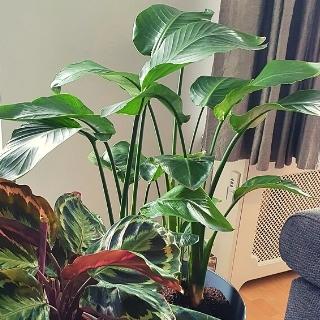
strelitzia nicolai 90cm
Discover this 90cm Strelitzia Nicolai! Shop now in our online store, it arrives fresh directly from the nursery, we pack it carefully and you will have it in 4-5 days at home!
- height: 80-95cm ↕
- pot: 21cm Ø
- amount: 1
- colour: large green leaves
- grown in the Netherlands
streltizia augusta 90cm
Another bird of paradise we have available for you is the Strelitzia Augusta of 90cm! Buy it online with all comfort and our quality guarantee and we deliver it to your home within 1-3 days!
- height: 85-95cm ↕
- pot: 20cm Ø
- amount: 1
- colour: large green leaves
- grown in Spain
strelitzia reginae
Another option is this Strelitzia reginae! Buy it online in comfort and we will bring it to your home within 2-5 days!
- height: 60-800cm ↕
- pot: 20cm Ø
- amount: 1
- colour: elongated green leaves
- grown in Spain
@VIRGINIA: Claro que sí, puedes complementar la luz de tu Strelitzia Augusta con luz artificial. La luz artificial puede ser una excelente solución cuando la luz natural es escasa. Para este tipo de planta, se recomienda usar luces LED o fluorescentes, ya que son más eficientes y generan menos calor. Es importante que la luz tenga un espectro adecuado, preferiblemente luces diseñadas para plantas que emiten luz en el rango azul y rojo. Coloca la luz a una distancia de unos 30-60 cm de la planta para evitar quemaduras. Deberías encender la luz entre 12 y 16 horas al día para simular el ciclo natural de luz. https://www.florespana.es/lampara-para-plantas-de-interior En este enlace encuentras más info. Además, asegúrate de que la luz esté bien distribuida para que toda la planta reciba los beneficios. Monitorea la planta para ver cómo responde a la luz adicional; si ves un crecimiento saludable, ¡es un buen indicio! No dudes en ajustar la intensidad y la gestión del tiempo de exposición según sea necesario. ¡Espero que esto ayude a que tu planta esté más feliz y saludable!
@JESÚS: ¡Hola! Buenos días. Parece que tu Strelitzia Augusta podría estar enfrentando un par de problemas. El cambio de color en los tallos y el polvito blanco que mencionas pueden ser signos de varias cuestiones, como exceso de agua, hongos o incluso plagas. No conocemos la situación actual ni exacta. Podrías enviarnos unas fotos a info@florespana.es? ¡Gracias!
Buenos días, tengo una strelitzia Augusta de unos dos metros en el interior de mi salón. Recibe mucha luz a lo largo de todo el día pero no sol directo. Los tallos en su base han empezado a cambiar de color a un tono marrón muy oscuro y le está saliendo un polvito blanco también por la base. Que le ocurre? Quizás exceso de agua? Algún hongo? He aireado la tierra que estaba húmeda y le he puesto un fungicida para el oidio. Qué puedo hacer para mejorarla? Gracias
Buenos días, tengo una strelitzia augusta, de unos 1.5m, la tengo en interior y creo que no le llega mucha luz, por su altura y las características de mi casa no es posible ponerla en otro sitio. Sería posible complementar la exposición de luz con luz artificial??, y si es posible qué tipo de luz debería ponerle?? Gracias por adelantado
Hola! Hay tres nuevas hojas en mi strelitzia desde hace más de 2 meses y no se abre, es normal o tendría que ayudarla abriéndola u poco con las uñas?
Buenas tardes! Gracias por tanta información! Te consulto, tengo una nicolai, pero se le cortajean las hojas… podras ayudarme? No sé qué debo hacer? Gracias!!!
Hola buenas. Muchas gracias por escribirnos! Esto es normal, ocurre mucho. Al abrirse y desenrollarse la hoja puede ser que se quede pegado una parte de la hoja. La planta tiene eso, la hoja puede romperse muy rápido, pero esto no es un problema. Hay que ayudar a la planta con cuidado. Con tus uñas puedes soltar la hoja para que se abra del todo. Saludos, FlorEspaña
hola buenos días, recientemente me han regalado una nicolai, ha salido una nueva hoja (la primera desde que la tengo) a la hora de desenroscarse no lo ha hecho del todo y se abierto la mitad, estando la mitad restante enroscada por lo que se ha cortado la hora,. gracias!
@ ARI: Es normal que las hojas de la Strelitzia tarden en abrirse, especialmente si son nuevas y la planta está ajustándose a su entorno. Sin embargo, si han pasado más de dos meses y no se abren, podrías considerar revisar las condiciones de luz, riego y humedad. No te recomiendo ayudarla a abrirlas con las uñas, ya que podrías dañar la hoja o la planta misma. Si la planta está saludable, eventualmente las hojas se abrirán por sí solas. Las podrías ayudar mojándolas un poco con un pulverizador por encima cada dos días o también aumentando la humedad ambiental con un humificador.